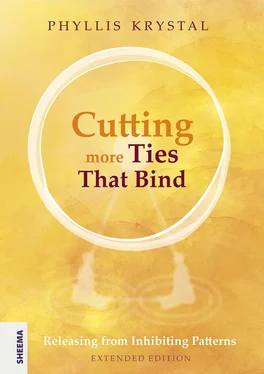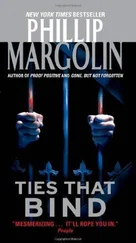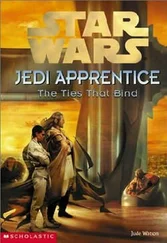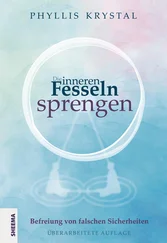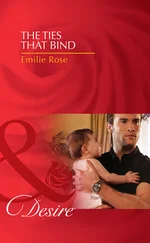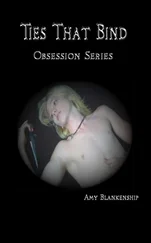Practical instruction is badly needed to help all adults who have undertaken the care of children. They need to be shown how to help the child to develop its own inner qualities, acquire habits that will allow it to live more fully and enable it to contribute to the world with confidence and a deep sense of security that emanates from knowing its own true identity.
But any two prospective parents have themselves been trained in very different ways by their two separate families. It is therefore often extremely difficult for either of them to relinquish their own ideas of child-rearing in favour of their partner’s. When their two sets of rules or guidelines are so different that they clash, the only recourse is to seek an entirely new set that has been proved to work well and that they can both accept.
I remember when our two daughters were young children, I was given a book by Ilg and Gessell on child-rearing in which the authors described the so-called ‘normal’ accomplishments at each age. It was a great relief to have even this much help as a guide and measure.
Nowadays, there are innumerable books available on many aspects of child-rearing as well as classes for prospective parents to attend together. They are then both exposed to the same new method, which helps to prevent conflict.
Many systems emphasise the physical and mental education, but very often omit the extremely important moral and spiritual training. It is the latter that is so necessary to prepare children to take their place as honest, caring and responsible world citizens who will improve the quality of life by their example instead of adding to the confusion already rampant throughout our world today.
When children are taught from the very start of their [earthly] lives to retain the original contact they all have with the High C, they are more apt to develop from their inner pattern, just as flowers and trees produce blooms and fruits according to their own species. Too often the innate pattern is stifled or deformed when the child is forced to conform to the ideas or beliefs of its parents and elders, whether they are appropriate or not.
Children are quick to detect the slightest trace of disapproval and will often suppress whatever does not evoke a positive response from their parents or guardians. Their very life depends on gaining approval from their parents; they will try very hard to earn it unless the demands are so severe that they force them to negate their own inner truth. In such cases, they will either rebel in an effort to express their right to their own identity, or withdraw within in an endeavour to protect their right to be themselves. Obviously, neither of these reactions can lead to healthy growth, balance or eventual maturity.
However, when parents have themselves learned to seek guidance from the High C, they are more likely to encourage their children to do the same. Those children whose parents have given them a living example of relying on the High C usually follow their lead and mature into responsible adults who continue to be guided in this way wherever they go. As Baba often says, only in this way can the world be changed for the better. Since the world is composed of people, as the people change, so will the world. To this end, he has initiated an extensive programme in which children from the age of 5 attend special classes specifically designed to teach them moral values and encourage them to keep in touch with the indwelling God-force for help and guidance.
His Education in Human Values programme for older children contains all the basic guidelines for a more effective and complete education. It includes the teaching of moral values in addition to the usual academic subjects now being exclusively taught in schools.
This programme has been accepted in one form or another by several state governments in India in addition to their usual school curriculum. Authorities in other parts of the world, too, are gradually paying attention to Sai Baba’s educational programmes.
By such means, the children of the world can gradually be taught true values which will develop positive habits. When they mature and take responsible positions in their countries, a major step will have been taken towards a better world under their stewardship. Instead of instinctively following the behaviour patterns of their parents, they will be capable of making their own choices, which at times may not necessarily be in accordance with those of the parents.
The two motivating forces of instinct and free will often conflict in a person’s life, causing great confusion, guilt, indecision and a host of other problems.
The instinctive action dictated by time-honoured and proven habits of the group may lead to one type of behaviour; but, if it runs counter to either a person’s desire or their beliefs about what is right, they may be drawn to two opposite types of behaviour. If they have a strong will, they may be able to stand firm by their own convictions. But, an unconscious guilt that they have deserted the instinctual mores of their heritage may be lurking in the background causing indecision.
Those who are not endowed with a strong will take the path of least resistance and follow the dictates of their particular family or group. They then often have an unacknowledged fear that by thus conforming they have denied expression to an important part of themselves. This is an undeniable loss and it too can cause guilt.
Parents and teachers are, therefore, faced with the necessity of steering a course between these two paths in training the children under their care. They need to define, first for themselves and then for the children, the true eternal values underlying all cultures, world religions and philosophies.
Baba has presented many of these tenets in the Education in Human Values programme. The five values that form the basis, Sathya (Truth), Dharma (Right Action), Shanti (Peace), Prema (Love) and Ahimsa (Nonviolence) cannot exist separately from one another, for each is connected to all the others.
All five are to be practised simultaneously to bring about harmony, balance and true maturity or wholeness. Actually, love is the most important of the five and each of the others can be attained only when it is combined with love as its most creative component.
But how can parents teach their children about love when they themselves may not have been taught either how to love or how to experience being loved? It has been proved that the most important aspect of bringing up children is love. But unless the true significance of that much maligned word is understood, many parents may not have the slightest idea of how to proceed.
To add to the confusion, it is well known that too much love of the wrong kind can be just as disastrous to the child as too little. Again, it is necessary to find that fine line between the two extremes.
Children who have never received love are incapable of loving others and, worse still, of loving themselves or receiving love from others. But those who have been spoiled by doting parents are in an equally serious condition. They are often only interested in themselves and the instant gratification of their desires. They demand from everyone they meet the same crippling adulation they have become accustomed to receiving from their parents. When they do succeed in attracting it to themselves, they then become even more spoiled, self-involved and demanding; but, if they fail to receive it, they tend to become disgruntled, complaining and helpless grown-up children, a burden to their families and friends and to society in general.
So, how can parents avoid these major pitfalls of loving their children either too little or too dotingly, each equally crippling to the child in their different ways? The only way to successful parenting is to understand and constantly remember that all are one at the High C level, though the individual personalities are very different from one another.
Читать дальше
